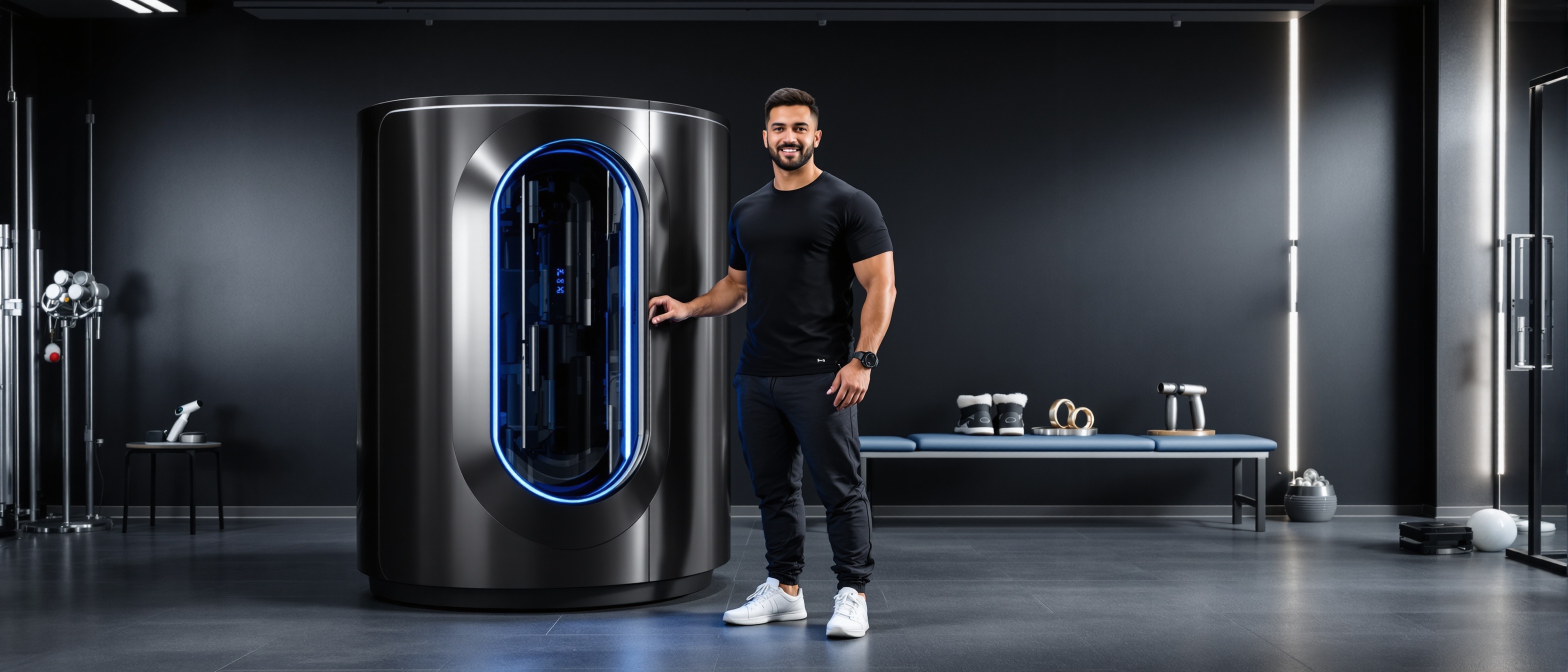Why Your HIIT Isn't Working (2025 Truth Exposed)
Your fitness tracker buzzes. Twenty-three minutes. That's all you need, according to the latest HIIT craze flooding your Instagram feed.
But here's what's really happening: while you've been scrolling through endless burpees and mountain climbers, a quiet revolution has been brewing in high-intensity training. New formats are emerging faster than you can say "tabata," and everyone from weekend warriors to elite athletes is jumping on board.
Think you know HIIT? Think again.
Searches for terms like "EMOM workouts" and "hybrid circuits" have exploded 300% this year alone. Reddit's r/HIIT community is buzzing with success stories, failed experiments, and heated debates about which format actually works. But here's the kicker—most people trying these trendy new approaches have no idea if they're actually more effective than good old-fashioned intervals.
So what's the truth behind these viral workout formats?
How HIIT Has Evolved
Remember when HIIT meant 30 seconds on, 30 seconds off? Those days feel ancient now.
Traditional HIIT followed a simple formula: work hard, rest briefly, repeat. It was born in labs, perfected by athletes, and eventually democratized for gym-goers everywhere. The science was clear—multiple studies showed HIIT could torch fat and boost cardiovascular fitness more efficiently than steady-state cardio.
But here's where things get interesting. As fitness became more social media-driven, trainers started getting creative. Why stick to basic intervals when you could mix modalities, play with timing, or create Instagram-worthy sequences?
The fitness landscape shifted from "what works" to "what's new." And honestly? That's not entirely a bad thing.
Traditional HIIT had its limitations. It could get monotonous. Some people plateaued. Others found it intimidating or too rigid for their schedules. The stage was set for innovation.
But here's what most people don't realize about this evolution…
The Newest HIIT Formats Explained
EMOM. Hybrid circuits. Cluster training. If these sound like fitness buzzwords designed to confuse you, you're not wrong—but there's method to the madness.
EMOM (Every Minute on the Minute) is perhaps the most talked-about format right now. The concept is deceptively simple: perform a set number of reps at the start of every minute, then rest for whatever time remains. Sounds easy until you're 12 minutes in and questioning your life choices.
What makes EMOM different? The self-regulating rest periods. Stronger on a particular day? You'll finish your reps faster and get more rest. Having an off day? You'll naturally work closer to the minute mark, automatically adjusting intensity.
Hybrid circuits blend multiple training modalities within a single session. Think strength movements mixed with plyometrics, cardio intervals combined with mobility work, or resistance training paired with metabolic finishers. One minute you're deadlifting, the next you're in a plank, then suddenly you're sprinting in place.
Cluster training breaks traditional sets into smaller chunks with brief rest periods. Instead of 12 straight burpees, you might do 3 burpees, rest 15 seconds, repeat four times. It's like HIIT within HIIT.
The appeal is obvious—these formats promise to fight boredom, target multiple fitness qualities simultaneously, and provide built-in progression systems. But do they actually deliver?
That's where things get complicated…
What Science Says: Efficacy and Safety
Here's the uncomfortable truth most fitness influencers won't tell you: the research on these newer HIIT formats is still catching up to the hype.
Traditional HIIT has decades of solid research backing its effectiveness. A 2021 systematic review published in the International Journal of Environmental Research and Public Health confirmed what we've known for years—HIIT significantly improves cardiovascular fitness, reduces body fat, and can be more time-efficient than moderate-intensity continuous training.
But EMOMs? Hybrid circuits? The scientific literature is sparse.
What we do have is promising but limited. A 2024 study in Frontiers in Physiology examined "cross-modality" training (similar to hybrid circuits) and found improvements in both muscular performance and cardiovascular adaptations. The researchers noted that varying movement patterns and energy systems within a single session may provide unique benefits.
EMOM workouts, while not extensively studied as a distinct format, follow established principles of interval training with auto-regulated rest periods. In theory, this could provide better recovery management and reduce the risk of overreaching—but we need more data.
The safety profile is mixed. These formats can be more complex than traditional HIIT, potentially increasing injury risk for beginners who jump in too quickly. The constant variation in hybrid circuits, while mentally engaging, can make it harder to master movement patterns and progress systematically.
But here's what the early adopters are reporting…
Anecdotal evidence from fitness communities suggests these formats may excel in areas traditional HIIT struggles with: adherence and enjoyment. When workouts feel less predictable and more game-like, people tend to stick with them longer.
There's a psychological component here that formal research hasn't fully captured yet.
Who Should Try New HIIT Approaches?
Not everyone needs to hop on the latest trend—and that's perfectly fine.
You might thrive with newer HIIT formats if:
- You're bored with traditional intervals but love the intensity
- You have solid movement foundations and injury-free joints
- You enjoy variety and complexity in your workouts
- You're looking to challenge multiple fitness qualities simultaneously
- You've plateaued with standard HIIT protocols
Stick with traditional HIIT if:
- You're new to high-intensity training (master the basics first)
- You prefer predictable structure and clear progression
- You're recovering from injury or have movement limitations
- You want the most researched, time-tested approach
- You're focused on specific, measurable goals (like improving VO2 max)
The honest middle ground? Most people would benefit from a blend. Use traditional HIIT as your foundation, then experiment with newer formats as variations or when you need a mental refresh.
Consider your current fitness level, injury history, and what actually keeps you consistent. The best workout format is the one you'll actually do regularly.
One more thing to consider: these newer formats often require more equipment, space, or coaching cues than basic HIIT. Make sure your environment supports your choice.
TL;DR: • New HIIT formats like EMOM and hybrid circuits are trending, but research is limited compared to traditional HIIT • These innovations may excel at fighting boredom and improving adherence • Traditional HIIT remains the gold standard for proven fat loss and cardiovascular benefits • Choose based on your experience level, preferences, and what keeps you consistent • Most people benefit from a mix of traditional and innovative approaches
The HIIT evolution isn't slowing down. New formats will keep emerging, each promising to be the next breakthrough. But remember—the most innovative workout is worthless if it sits unused.
Pick a format that challenges you, fits your lifestyle, and gets you moving consistently. Whether that's classic intervals or the latest Instagram trend doesn't matter nearly as much as showing up and putting in the work.
Your future self will thank you for starting today, regardless of which timer you're following.





